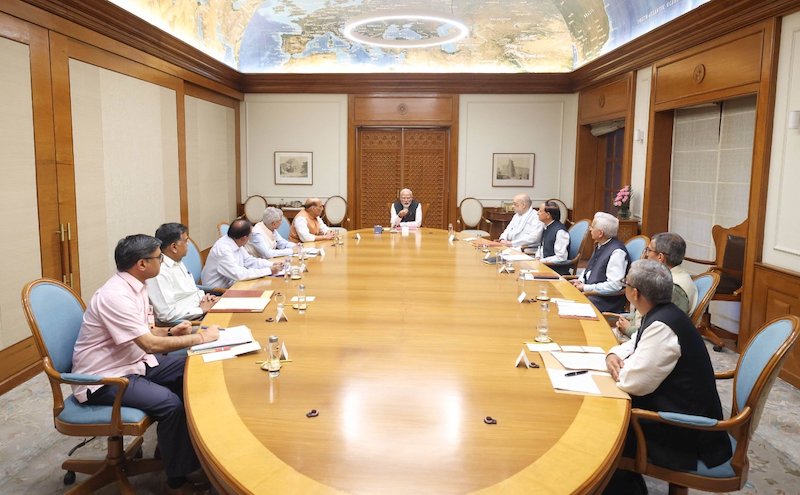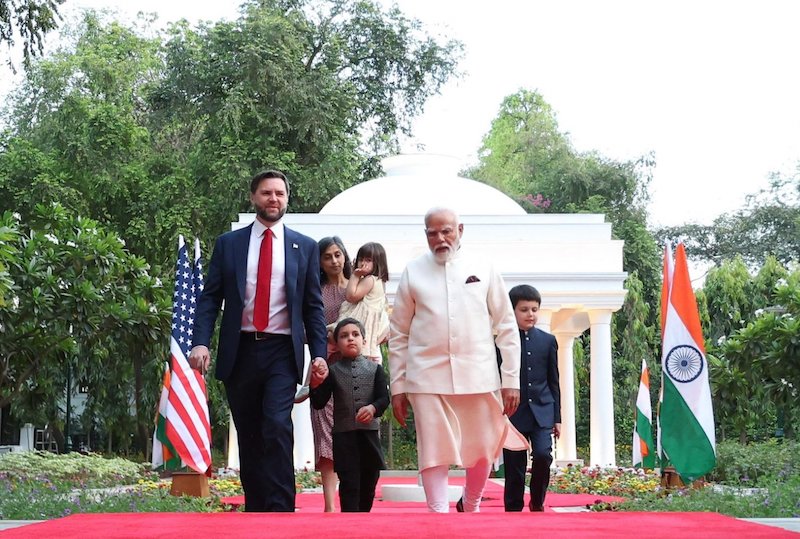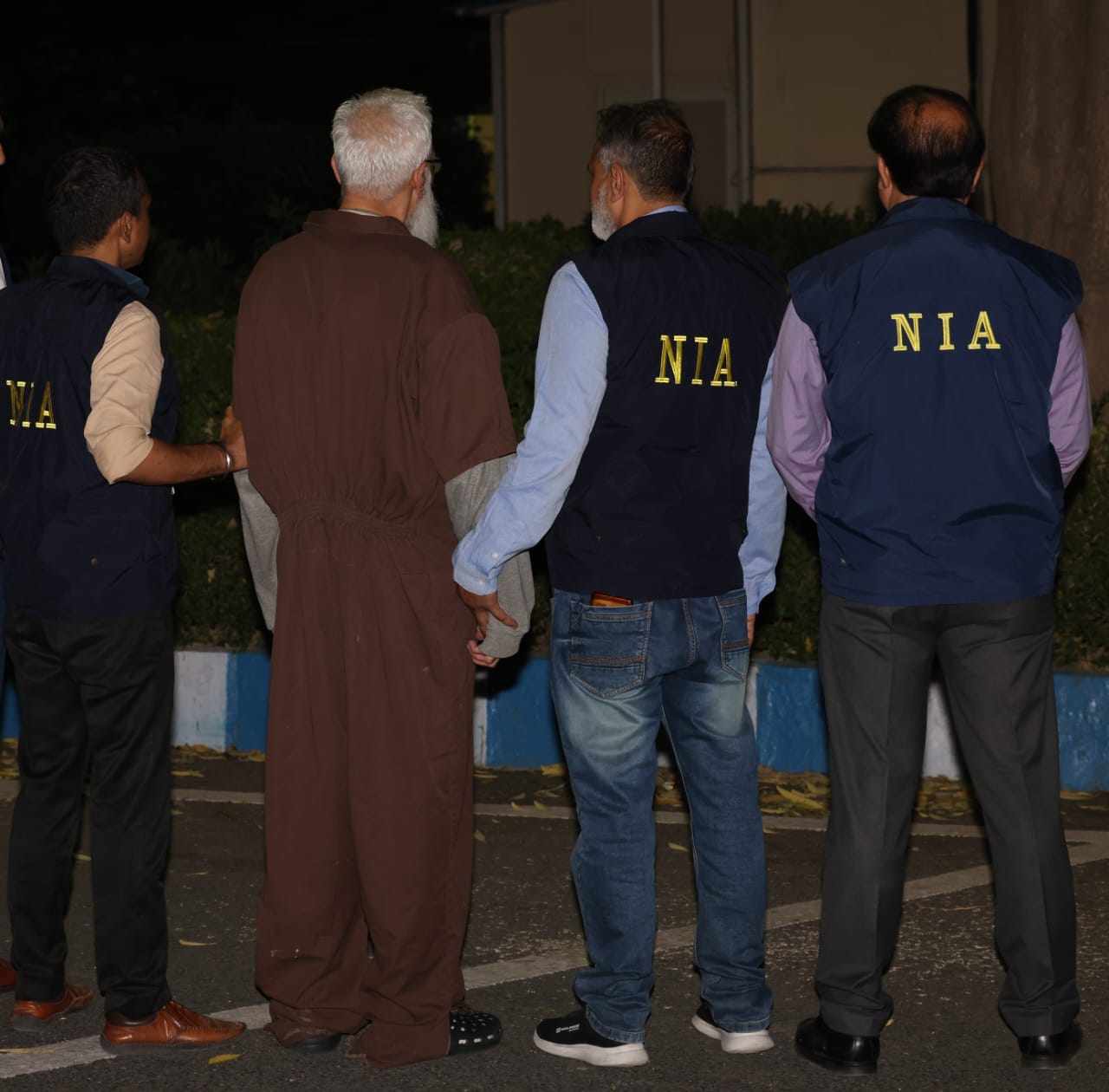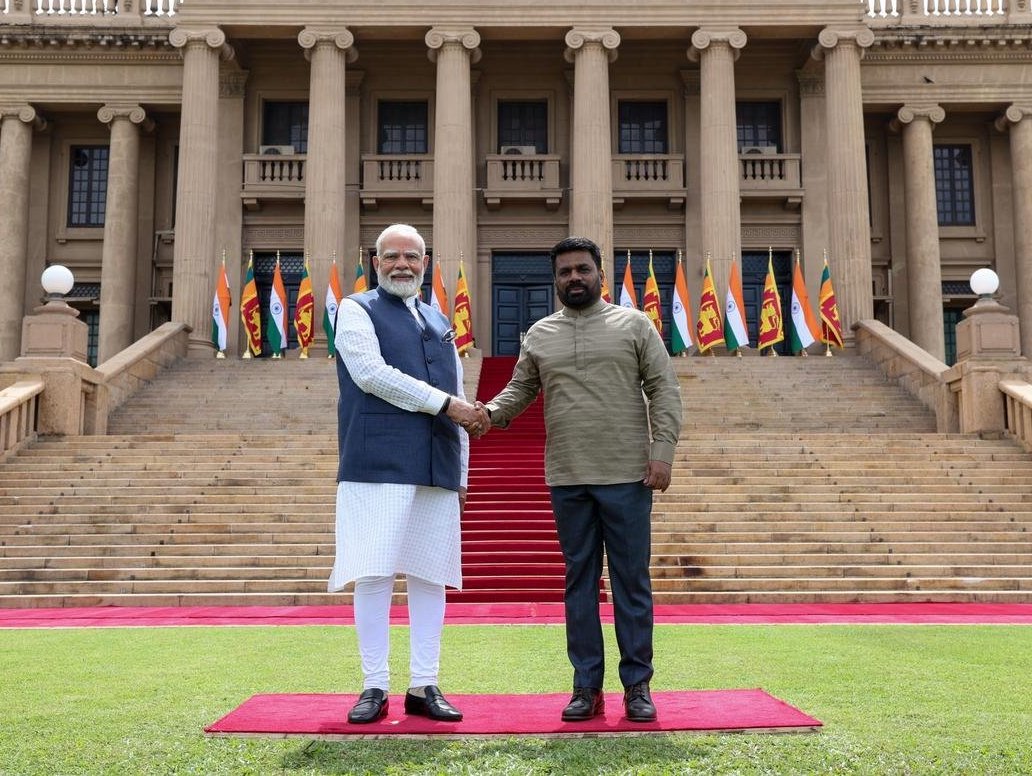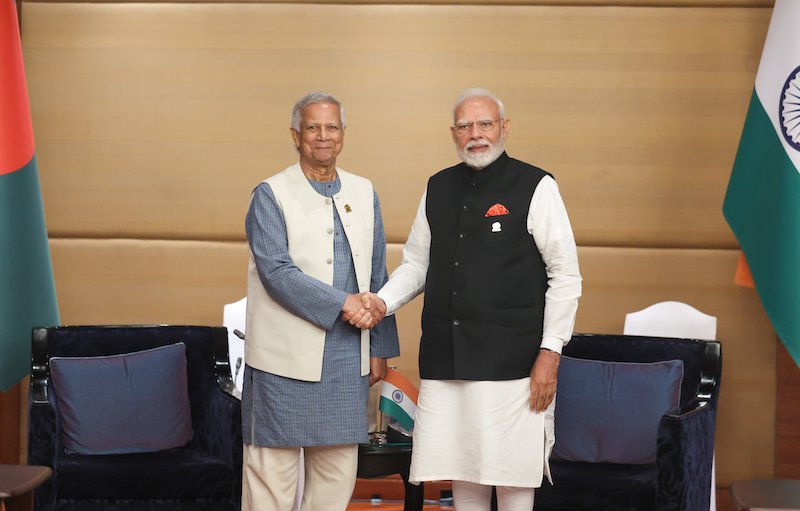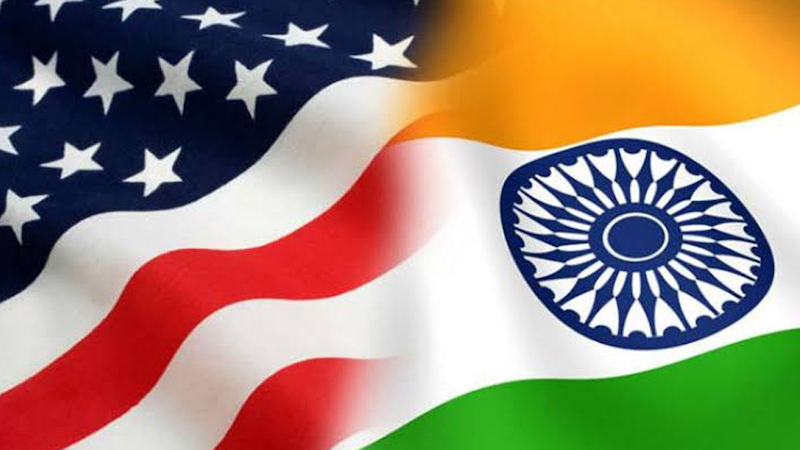 India has already signed several military-linked agreements with the US, like GSOMIA, LEMOA, COMCASA, and BECA before signing SOSA.
India has already signed several military-linked agreements with the US, like GSOMIA, LEMOA, COMCASA, and BECA before signing SOSA.
New Delhi: India and the United States recently signed the Security of Supply Arrangement, or SOSA, on Thursday, as India Sentinels reported. This non-binding arrangement was signed while the defence minister, Rajnath Singh, was on a four-day visit to the US, which was touted as a “strategic visit” in the diplomatic circles.
Now, reports are emerging that the US is very keen to see India enter the Reciprocal Defence Procurement Agreement (RDPA), a legally binding agreement, with it. Sources within the diplomatic and defence establishments told media that initial talks between New Delhi and Washington are taking place on this.
Let’s see what SOSA and RDPA are and how they are going to affect India’s security ambitions.
What is Security of Supply Arrangement or SOSA and how will it impact India?
The Security of Supply Arrangement (SOSA) is a bilateral, non-binding agreement between the United States and its global defence partners. Its primary aim is to establish a framework for reciprocal priority support for defence goods and services crucial to national security of both the US and the other signatory. Through SOSA, the US and partner countries agree to expedite the handling and provision of critical industrial resources in the event of unexpected supply chain disruptions.
Key aspects of SOSA include:
* Reciprocal Priority Support: The core of SOSA is the commitment to mutual priority support, with both the US and partnering nations agreeing to prioritize each other’s defence-procurement requests. This is particularly vital during emergencies when supply-chain resilience is crucial for maintaining national defence capabilities.
* Defence Priorities and Allocations System (DPAS): In the US, SOSA operates in conjunction with DPAS. Under this system, the US Department of Commerce (US DoC), upon determination by the US Department of Defense (US DoD), can prioritize contracts for defence materials and services from its industrial base, ensuring national security requirements are met even under challenging circumstances.
* Partner Nations’ Commitment: While the US implements DPAS, partner nations typically establish similar frameworks within their own industrial bases. This might involve adopting a government-industry code of conduct, where private sector firms agree to prioritize US defence needs as part of their contractual obligations.
* Strengthening Supply-Chain Resilience: SOSA acts as a proactive measure to prevent and manage supply chain disruptions. By establishing clear communication channels and mechanisms for expedited procurement, it enhances the overall resilience of the defence supply chain, vital for maintaining readiness in both peacetime and conflict.
* Strategic Partnerships: The US has entered into SOSAs with several key allies, including the United Kingdom, Australia, Japan, and various North Atlantic Treaty Organization (Nato) members. These agreements form part of a broader strategy to ensure effective mutual support for defence needs, thereby enhancing collective security.
* Broader Implications: Beyond supply chain management, SOSA fosters deeper industrial collaboration between the US and its partners. By ensuring mutual support in defence procurement, it helps integrate the defence industrial bases of participating countries, promoting joint research, development, and production of defence technologies.
It is worth noting that while Canada doesn’t have a formal SOSA with the US DoD, the US commerce department has a separate agreement with Canadian Public Works and Government Services (CPWGS) for mutual priority support. This allows the US DoD programme managers, contractors, and subcontractors to request priority assistance for US defence purchases in Canada through the US defence department.
To summarize, the SOSA is a crucial tool for the US and its defence partners to ensure they can meet national security needs under any circumstances. It represents a significant aspect of the US’s approach to international defence cooperation, focusing on the resilience and integration of global defence supply chains.
Implications of SOSA for India
As stated earlier, India and the US signed the Security of Supplies Arrangement on August 22. This bilateral but non-binding agreement aims to ensure reciprocal priority support for the delivery of defence goods and services, which are critical for the national security of both countries.
SOSA establishes a framework that facilitates both countries in addressing potential supply-chain disruptions, particularly in times of emergency or conflict. Through this arrangement, the US will provide India with assurances under its DPAS. This system, managed by the US DoC, allows the US government to prioritize the production and delivery of critical materials and services from its industrial base. In return, India will implement a government-industry code of conduct, where Indian defence or defence-related companies voluntarily commit to giving the US priority support in fulfilling its defence needs.
This arrangement is crucial for both nations as they navigate the complexities of global supply chains, especially in the context of defence procurement. By establishing this reciprocal support mechanism, the SOSA seeks to mitigate risks associated with supply chain disruptions and enhance the overall resilience of the US and Indian defence industries.
Furthermore, the arrangement is part of a broader strategy to deepen the India-US defence partnership, aligning with the goals of the Defence Technology and Trade Initiative (DTTI). This initiative focuses on co-development and co-production of defence technologies, which are vital for the strategic interests of both nations. The SOSA also plays a key role in strengthening interoperability between the Indian and American defence sectors, paving the way for more integrated defence industrial cooperation.
India is the 18th country to enter into such an arrangement with the United States, joining a group that includes key allies and partners. The other countries that entered the SOSA with the US are Australia, Canada, Denmark, Estonia, Finland, Israel, Italy, Japan, Latvia, Lithuania, the Netherlands, Norway, Republic of Korea, Singapore, Spain, Sweden, and the United Kingdom.
These arrangements are instrumental in bolstering the US’s defence industrial base by ensuring a reliable supply of critical resources, thereby enhancing national security.
To sum it up, the US-India SOSA is a key development in the ongoing efforts to strengthen defence ties between the two countries. It not only ensures the continuity of critical supply chains but also fosters deeper industrial cooperation, which is essential for maintaining the security and defence capabilities of both nations in an increasingly uncertain global environment.
What is Reciprocal Defence Procurement Agreement or RDPA and how will it impact India?
The Reciprocal Defence Procurement Agreement (RDPA) is a strategic framework developed by the United States to bolster defence cooperation with allied and friendly nations. These agreements aim to enhance the rationalization, standardization, and interoperability of defence equipment, thereby streamlining defence procurement processes between signatory countries.
The RDPA, which is essentially a legally binding pact negotiated by the US DoD with foreign governments, seeks to foster closer defence industrial cooperation. It ensures transparency, integrity and fairness in defence procurements while eliminating barriers to market access, thus enabling reciprocal procurement of defence items.
Key objectives of the RDPA include:
* Promoting rationalization and standardization of defence equipment to ensure compatibility and interoperability during joint operations.
* Facilitating ongoing communication regarding market access and procurement matters, ensuring equal opportunities for defence industries in signatory countries.
* Waiving certain “buy national” laws, such as the US’s Buy American Act, to allow for a more open and competitive market.
The US has established RDPAs with several Nato allies, such as the United Kingdom, Germany, and France, and other friendly nations, like Japan, Australia, and Israel. Recently, the US has signed an RDPA with Lithuania, reinforcing defence ties with the Nato member, which is strategically located on the alliance’s eastern flank near Russia.
The RDP agreements with its allies have proven instrumental in enhancing defence cooperation. For instance, the RDPA with the United Kingdom has facilitated numerous joint defence projects and procurement initiatives.
Implications of RDPA for India
Presently, going by media reports and sources in the defence establishment and diplomatic circles, the US and India are in discussions to enter an RDPA, which would mark a significant milestone in their defence and deepening strategic relationship. This agreement, if signed, is expected to address certain key areas, such as:
* Ensuring transparency and fairness in defence procurements.
* Providing reciprocal market access to each other’s defence markets.
* Promoting interoperability of defence equipment.
However, challenges remain in implementing such agreements, including:
* Addressing regulatory barriers that might impede smooth implementation of the RDPA.
* Ensuring equal opportunities for defence industries in both countries to participate in procurement processes.
* Navigating geopolitical considerations and respective strategic interests. For example, India is a close defence and trade partner to Russia and a major trade partner to China – both top geopolitical adversaries of the US.
Implications for India’s defence industry
An RDPA between Washington and New Delhi could have several significant implications for India’s defence industry. Some of them include:
* Enhanced Market Access: The RDPA would provide Indian defence manufacturers with greater access to the US defence market. This could lead to increased opportunities for Indian companies to bid on American defence contracts, potentially boosting their revenue and global presence.
* Increased Collaboration and Joint Ventures: The agreement could facilitate more collaboration and joint ventures between Indian and U.S. defence companies. This would not only bring in advanced technologies and best practices but also help Indian companies to upgrade their capabilities and competitiveness.
* Technology Transfer: One of the critical aspects of the RDPA is the potential for technology transfer. Indian defence firms could gain access to cutting-edge US defence technologies, which could be instrumental in modernizing India’s defence capabilities and fostering innovation within the domestic industry.
* Standardization and Interoperability: The RDPA aims to promote the standardisation and interoperability of defence equipment. For India, this means that its defence forces could benefit from using equipment that is compatible with US systems, enhancing operational efficiency during joint exercises and missions.
* Boost to Domestic Manufacturing: With increased access to the US market and potential collaborations, there could be a significant boost to domestic manufacturing in India. This aligns with the Indian government’s “Make in India” initiative, which aims to transform India into a global manufacturing hub.
* Regulatory and Compliance Challenges: While the RDPA offers numerous benefits, Indian companies may face challenges related to regulatory compliance and meeting the stringent standards required by the US defence procurement process. Addressing these challenges will be crucial for Indian firms to fully leverage the opportunities presented by the RDPA.
* Competitive Pressure: Increased access to the US market also means that Indian companies will face competition from established US and global defence firms. This competitive pressure could drive Indian companies to innovate and improve their products and services to remain competitive.
How does India move from here?
While India has maintained neutrality in power games between opposing major powers (read US & Allies and Russia & China) on the world stage, it has at the same time courted both sides for its national interests. A case study is India’s neutral stand in the Russia-Ukraine war. Also, while Russia remains a major defence partner to India, its growing defence cooperation with the US over the last two decades has seen India migrating from Russian defence platforms to US defence platforms.
While India’s diplomatic ties with China have nosedived after Beijing’s 2020 land-grab in eastern Ladakh, India’s trade volumes with its northern neighbour have reached record heights.
While India has signed other military-linked agreements with the US, like GSOMIA, in 2002; LEMOA, in 2016; COMCASA, in 2018; and BECA, in 2020; before signing SOSA this month, and is a member of the Quadrilateral Dialogue (Quad) with the US, Japan, and Australia, it has also regularly bought advanced weapons from Russia and held military exercises with the country. Even China participated in some of the joint drills with India and Russia.
With the US laws, such as Countering America’s Adversaries Through Sanctions Act (CAATSA) in place, which resulted in the US even kicking out Nato ally Turkey from the F-35 joint programme for buying S-400 anti-missile systems from Russia, it is well understood that India’s defence and strategic ties with the US can’t be as deep as Washington’s defence and strategic ties with its other non-neutral allies, like the UK, Israel, and Japan.
Of course, this may change in the future if India downgrades its defence and strategic ties with Russia and decides to join the US camp shedding its geopolitical neutrality.


